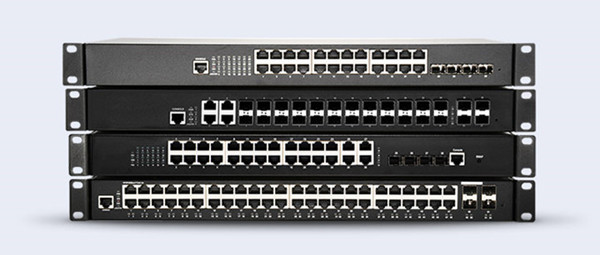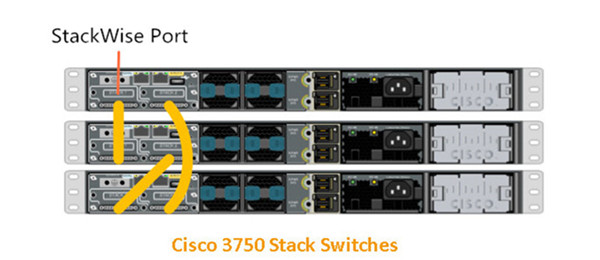Stack Switch: Optimize Your Network Performance to the Maximum
Stacking switch is a common technology used in network design, especially when large numbers of ports are required in data centers or large size networks. Stack switch not only provides high performance, but also maximizes network scalability and simplify network management. That’s why stackable switches are popular among network builders. Then what is stack switch? What’s the common way for switch stacking in the market?
What Is Stack Switch?
Stack switch, also called stackable switch by vendors, allows several switches to stack via specific stackwise port or uplink port. Traditionally the switches stacked together usually is limited to the same series of network switches. Mixed switch stacking is allowed for today’s switches. The number of stacked switches is often determined by switch brand. For example, Cisco 3850 stack switch can have a maximum of eight switches to be stacked, while Dell N4000 series stack switches are up to twelve. When switches are stacked, all members in this stack share the same IP address and can be managed as “one unit” through the CLI (command line interface) or embedded Web interface, which offers great convenience for network administrators without lowering its performance.

Usually stack switches come with fixed configuration like 12, 24, or 48 gigabit Ethernet ports. Compared with modular switches that allow line cards or service modules in and out as needed, stack switches are more cost-effective in enterprise campus networks which offer endpoint connectivity and uplink capabilities for users at a price per port. Therefore, for those who has limited switch port or enterprise networks that lack of physical expandability, stack switch is an excellent choice for network expansion.
How to Achieve Network Switch Stack?
From the first generation of of Cisco 3750 series stack switches, the stackable switch market has become more mature, so does the switch stacking technology. Like Cisco, other network switch vendors like Dell, Brocade and FS.COM also add their own unique features and functionality to their stack switches, which enhance the virtuous circle of switch stacking technology development.
The typical method for switch stacking is to use stacking cable via stackwise port. Take Cisco 3750 series stack switches for example. Stackwise port lies on the rear-panel. Only approved cables can be used to connect the 3750 stack switches with other similar switches. If not, devices easily get damage. In addition, Cisco offers different connection types for this stack: full bandwidth connection and half bandwidth connection, which provide great flexibility for different application requirements.

Another way to achieve switch stack is to use the uplink ports. As has mentioned, many switch vendors upgrade the switch stacking technology to improve their competitiveness. Today’s stack switches can be stacked using several types of Ethernet ports such as 10GBASE-T copper port, 10G SFP+ fiber port and 40G QSFP+ port. Here take FS S3800-24F4S stackable managed switch as an example. As shown in the following picture, in the stack, one fiber cable from a 10G SFP+ port on a stack switch is connected to a SFP+ stacking port on the next switch. This process is repeated until all of the devices are connected. And the first stack switch is also connected with the last one to complete the stacking topology.

Conclusion
Stack switch, no matter uses stack cable or SFP+ stacking/uplink port, provides high bandwidth port density and easy management for network design. But compared with the way of using stack cable, stacking/uplink port is more cost-effective. Besides, using fiber uplink port to stack switch can realize long distance stacking in different areas, which are more popular in today’s network infrastructures.
评论
发表评论